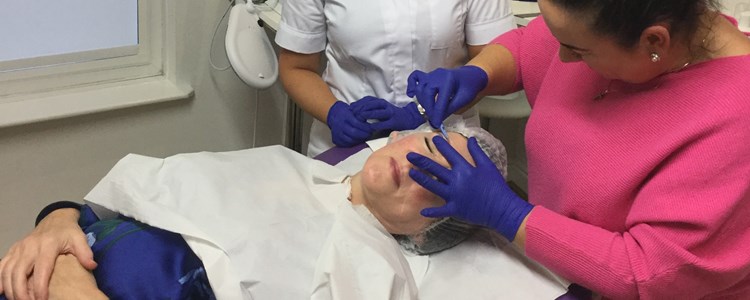
Last month we talked you through some of the benefits of training in advanced skin treatments as a beauty therapist. This month, as promised, we’re moving on to the benefits for those practitioners who come from a medical background, such as doctors, nurses and dentists.
As a training provider, we regularly hear from medical practitioners who are reluctant to train in procedures such as chemical peels or microneedling as these are treatments that are more commonly associated with beauty therapy. As medics, even if they are already trained in injectable aesthetics, they generally have little to no knowledge or experience of working with the skin in this context, so it can feel a little bit like “the unknown”. In our experience, however, injectable aesthetics and advanced skin treatments can work really well together and it can be extremely beneficial to offer both types of treatments to your patients.
A better understanding of the skin
Aesthetic practitioners will have an excellent understanding when it comes to the muscles and structures of the face and how to use Botox or dermal filler to achieve great results, however, injectable training doesn’t go in-depth about treating the skin itself. For a practitioner to really establish themselves as an expert in aesthetics, a deeper knowledge of the skin makes a huge difference. Our Lead Educator, Yvonne, is extremely experienced in all areas of aesthetics but also holds a degree in Dermatology. This further knowledge of the skin means that she is able to take a far more informed approach with each patient, assessing not just their muscle movement and skin laxity, but the overall quality and condition of their skin and how this may impact the results of a particular procedure.
Address the skin as well as the wrinkles
Following on from the point above, training in advanced skin treatments allows an aesthetic practitioner to treat various skin issues, not just the signs of ageing. While Botox and dermal fillers can work wonders for lines and loss of volume, they won’t really improve the quality of a person’s skin. A Botox patient who suffers with acne scarring is still going to have acne scarring once their Botox treatment is complete. Therefore, a practitioner who can address a variety of skin concerns, as well as lines and wrinkles, will certainly have an edge over other practitioners.
Increase your income with repeat appointments
One of the best things about having an aesthetic business is the knowledge that as long as your patients are happy with your work, they will keep coming back to you for repeat appointments. However, due to the longevity of Botox and filler results, those appointments may be three months, six months or even further apart, meaning that aesthetic practitioners require a constant stream of clients who return every few months in order to maintain a regular income.
Advanced skin treatments provide aesthetic practitioners with a way to encourage patients to come back more frequently. Certain treatments, such as peels or dermaplaning, can actually be more effective when carried out as part of a course, with a few weeks between each session. By offering skin treatments, in addition to the usual injectables, a practitioner is able to reduce the length of time between each patient visit, therefore increasing their income from each patient.
If this article has piqued your interest in attending one of our skin courses, you can find all of our upcoming dates here. A great course to start with is our Global Approach to Skin, which covers several extremely popular skin treatments over 2-3 days.
